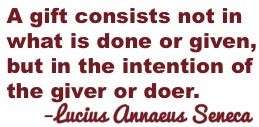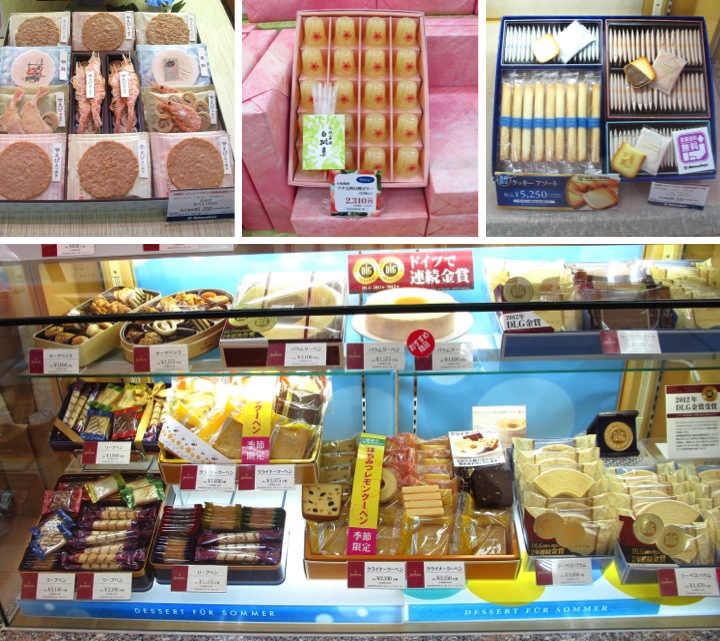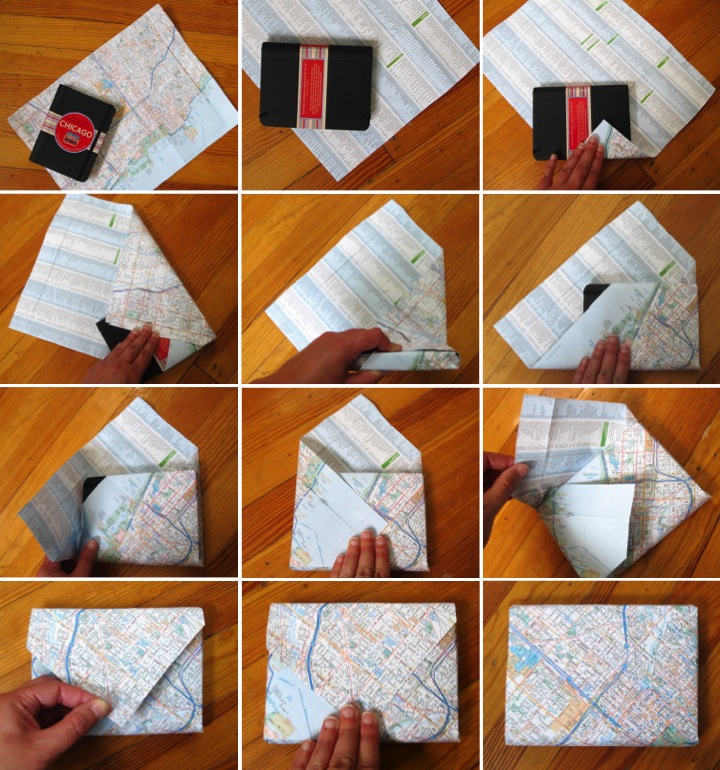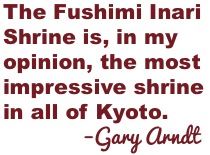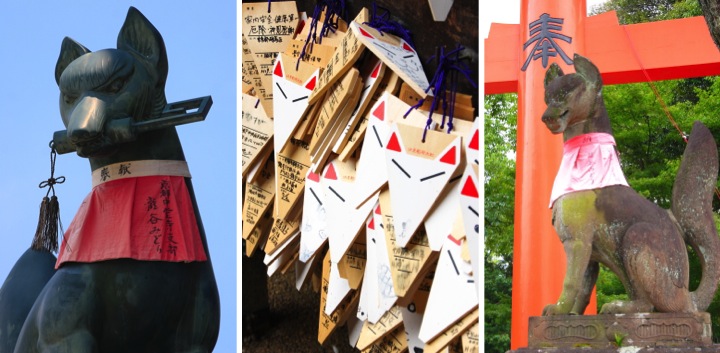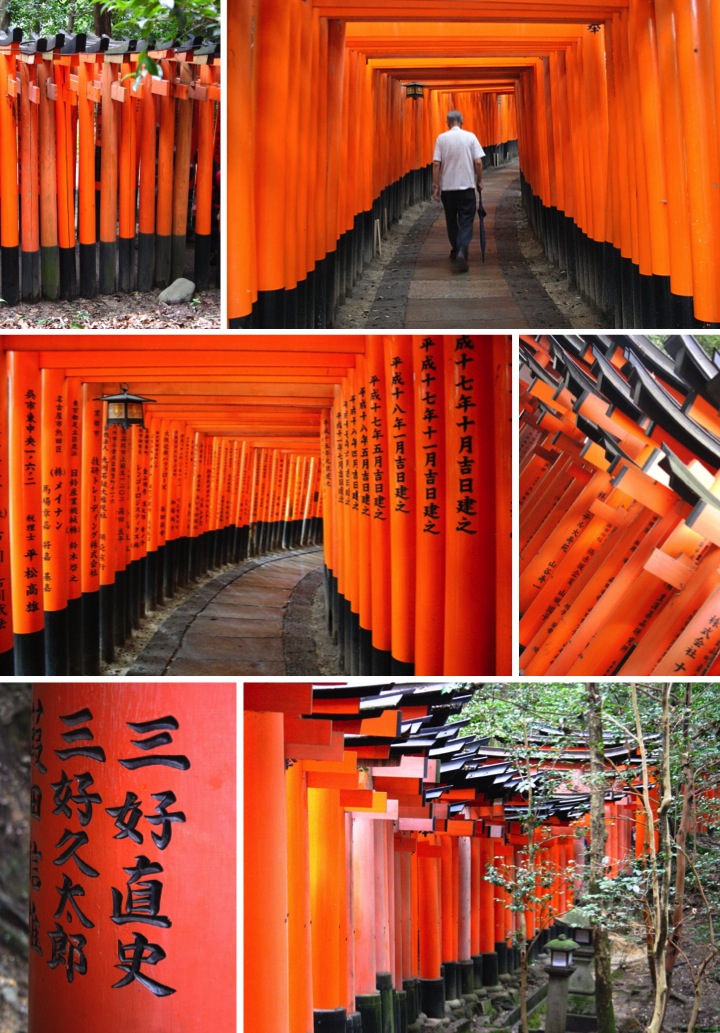Week in Pictures: 7.22.2012
This past week has been a whirlwind with preparing to go to Japan for work at the beginning of the week and then being in Japan for the rest of the week. So far my business trip has been very productive and as an added bonus I've had a chance to see a lot of friends from when I lived in Japan. I always enjoy being back in Japan and this time has been no different. Here is a sampling of some of the photos I snapped this week.
Collage One, First Row
- Right before heading off to Japan I hit up Target to find some treats to bring my co-workers in Japan (omiyage)
- I discovered the first ripe tomatoes in my garden before my trip. They were delicious and I hope when I get back more are ready to eat
- Tuesday afternoon I took off from the Detroit airport after grabbing lunch with Frank
Collage One, Second Row
- Wednesday evening I arrived in Nagoya absolutely exhausted. Barely sleeping for a few days followed by a thirteen hour flight and a thirteen hour time change will do that to a person.
- As I was riding the bus from the airport I saw a lovely sunset over Mikawa Bay
- I wanted to stay awake to try and get adjusted to the time zone so I went to Vegebird to get some delicious kushiyaki (grilled skewers) and umeshu (plum wine)

Collage Two, First Row
- After work on Thursday, I took a walk by my old apartment building and am happy to report it is exactly the same as when I lived there. I do this every time I come back to Japan for work just to reminisce.
- I met up with some friends for dinner on Thursday night who happened to be staying in the Toyota Castle Hotel. When I met them in the lobby I discovered that the Toyota Castle now has a tanuki mascot dressed up in a bellman's outfit complete with a top hat. Of course I got a picture with him.
- For dinner we headed to my favorite place to eat in Toyota City, Tsubasaya. The have the best tebasaki (chicken wings)
Collage Two, Second Row
- Tsubasaya had a new item on the menu, amai ebi mayo, which was fried shrimp covered in mayonnaise and topped with jelly beans. It was too strange not to order.
- Following dinner, we headed to Second Story (a tiny bar nearby) for Magic Night performed by Sawa-san. When I lived in Japan, Magic Night was every Wednesday but it has since moved to every other Thursday. Lucky for me, it just happened to be on the Thursday I was in town. Sawa-san had some amazing new tricks and I am always impressed by his act.
- My trip overlapped with the Nagoya Oktoberfest celebration so I headed over with some people on Friday night. It was a little strange (Oktoberfest in July in Japan?) but really cool. There were huge tents set up with table underneath and the outside was ringed with German beer and food stalls. Up front a German band, wearing lederhosen of course, played polkas all night
Collage Two, Third Row
- What do you eat at Oktoberfest? Sausages, sauerkraut, potatoes and beer!
- Oktoberfest closed down at nine, so we headed out for more eating and grabbed some dumplings
- Saturday morning I decided to head out to Gujo Hachiman, a little town on the Yoshida River in Gifu Prefecture that is famous for the Gujo Owari dance festival and plastic food replicas
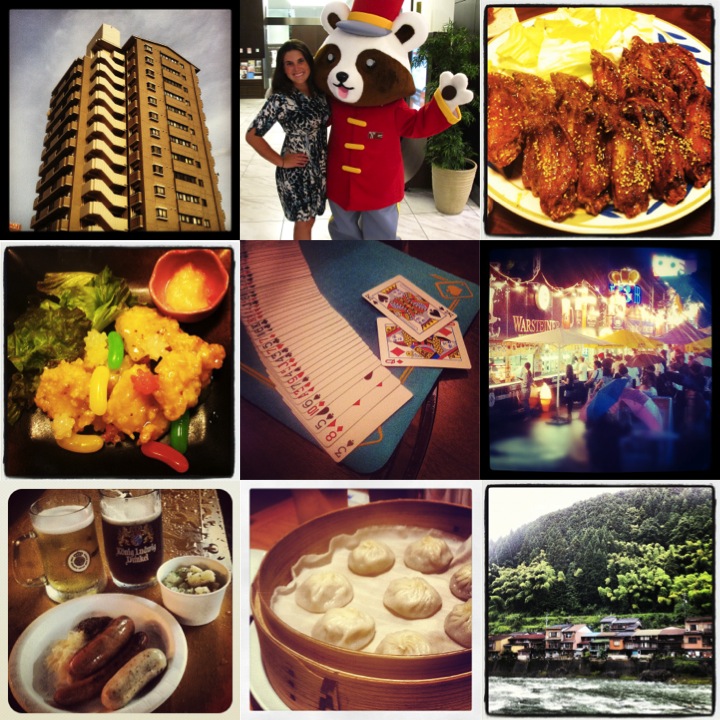
Collage Three, First Row
- While I was walking along the banks of the Yoshida River I stumbled upon a man fishing for ayu, a local fish
- Being in Gujo Hachiman, I had to try my hand at making some food replicas and created a little pastry. Eighty percent of the food replicas that are on display in the windows of Japanese restaurants are made in Gujo Hachiman
- Saturday night I went back to Nagoya Oktoberfest, this time with a different group of friends
Collage Three, Second Row
- After Oktoberfest closed at nine, we headed to ID Bar, a dance club in Nagoya that I hadn't been to in years. It was like going back in time four years
- On Sunday morning I headed to the Aichi Prefectural Gymnasium to see if there was any chance I could get a ticket to the Nagoya Basho (Sumo Tournament). It was sold out but I had fun watching some of the younger sumos walking around outside
- For lunch I grabbed a bowl of kishimen, a flat type of noodle famous in the Nagoya area
Collage Three, Third Row
- Since I was right nearby, I visited Nagoya Castle, which I hadn't been to in several years. They are rebuilding the Hommaru Palace which was destroyed in WWII using traditional techniques. It was really neat to see the progress on the buildings
- It was hot out so I escaped to the cool and peaceful forest surroundings of Atsuta Jingu (a famous Nagoya Shinto shrine) for a little while
- In the late afternoon I headed to Osu Kannon (a covered pedestrian mall) for some fun people watching.
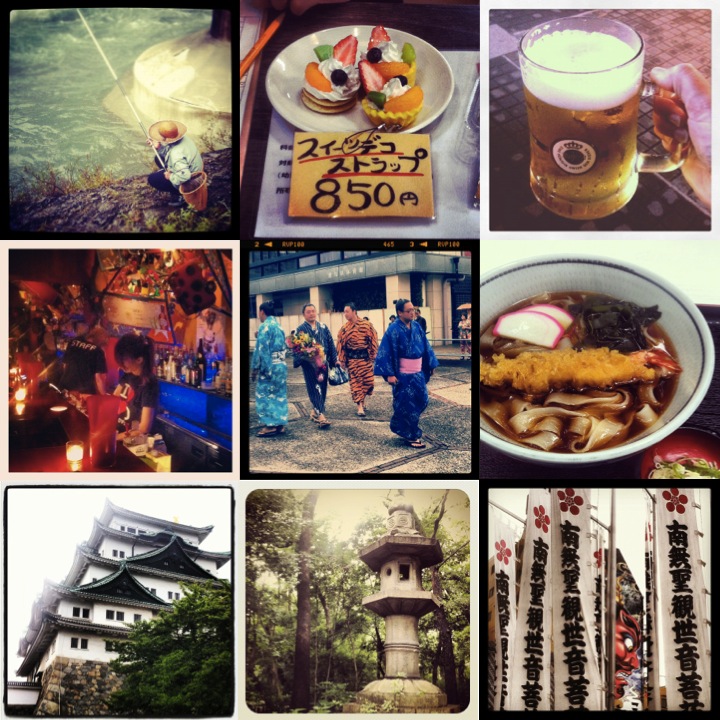
What have you been up to this week? Have you been busy or are you enjoying a relaxing summer?

 Sunday, July 22, 2012 at 6:48PM
Sunday, July 22, 2012 at 6:48PM
